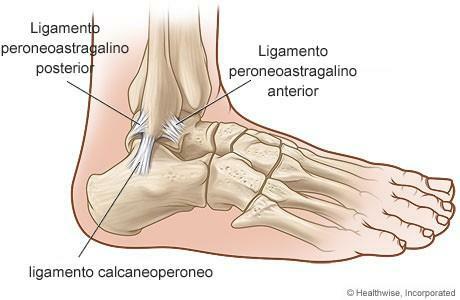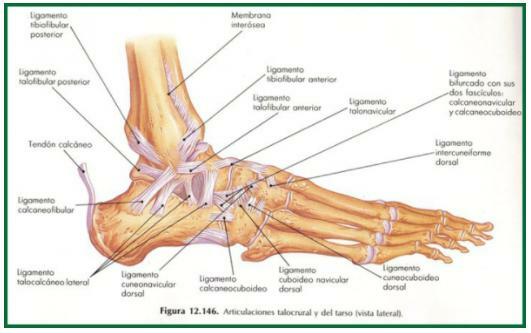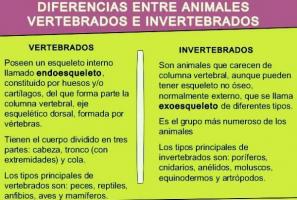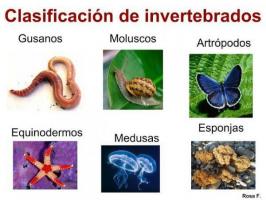List with the LIGAMENTS of the FOOT

Image: CEMTRO Clinic
Ligaments are thick tissue fibers that, although very strong, are very flexible. Its function in the body is to strengthen the bond between the bones, that is, they strengthen the joints. As you can imagine, in the foot there are a large number of joints, so there are a large number of ligaments (the ligaments that strengthen the attachment of the leg to the ankle, the ligaments that attach the ankle and toes, etc). In this lesson from a TEACHER we will look at the different groups of ligaments of the foot and ankle. If you want to know more, keep reading!
Index
- Foot and ankle
- Ankle Ligaments
- The main ligaments of the foot
- Can ligaments be injured?
The foot and ankle.
The foot is the final part of the lower limb of some animals, including man. Thanks to its anatomy, the parts that compose it and the movements that these allow (biomechanics), the foot is capable of being a flexible or fixed structure as we need it. Remember that the foot is made up of 26 bones, 33 joints, and more than 100 muscles, ligaments, and tendons.
The foot joins the rest of our body through the ankle, a joint that allows the foot to support and move the rest of the body without much problem if the parts that form the ankle are correct and work adequately. If not, there can be numerous diseases that can be very annoying.
In this lesson from a TEACHER we will look at the ligaments of the foot and ankle.
The ankle ligaments.
The ankle is a region of the body that must allow a large number of movements but it must also be strong and support the weight of the body while we walk. This makes the ankle a region formed by a large number of small ossicles and the number of joints and ligaments present is greater than expected.
In order to study them, the researchers have classified the ankle ligaments in four groups: medial (tibial), lateral (peroneal) collateral ligaments, sinus tarsal ligaments, and tibiofibular ligaments. Each of these groups has a specific function within the ankle, which we will see below:
- Medial or tibial collateral ligaments. This group of ligaments has a triangle shape as a whole and is made up of three ligaments: tibioscaphoid, tibiospring, tibiocalcaneal and tibiotalar.
- Llateral or peroneal ligaments. This group of ligaments is made up of the anterior peroneo-talar, posterior peroneo-talar, and peroneocalcaneal ligaments.
- Ligaments of the sinus tarsi. This group of ligaments consists solely of the talocalcaneal ligament and the cervical ligament.
- Lanterior and posterior tibiofibular ligaments or complex distal tibiofibular syndesmotic ligament. This complex of ligaments is made up of three short bands, one anterior and two posterior to the ankle.

Image: Selene Physiotherapy
The main ligaments of the foot.
The ligaments of the foot are not as strong and powerful as the ligaments that make up the ankle, but they are more numerous. The most important ligaments that make up the foot are:
- Calcaneofibular ligament
- Lateral talocalcaneal ligament
- Dorsal cuneonavicular ligament
- Calcaneocuboid ligament
- Dorsal navicular cuboid ligament
- Dorsal cuneocuboid ligament
- Dorsal intercuneiform ligament
- Bifurcated ligament, formed by two bundles: calcaneonavicular and calcaneocuboid
- Talonavicular ligament
- Anterior talofibular ligament

Image: SportSalud
Can ligaments be injured?
Like muscles or bones, we can also damage our ligaments. Ligaments are made of a tissue that, although very strong and flexible, is not very elastic and can be damaged relatively easily. In addition, the ligament is a structure that does not receive much blood supply, so injuries repair more slowly to what others do (such as muscle injuries).
Ligament injuries can be measured in three levels of severity:
- Grade I ligament injury: the ligament lengthens more than normal and there are small tears (similar to those that appear in an excessively old rubber band). These injuries usually cause some inflammation, and therefore a small edema, but they do not prevent the joint from being able to continue moving, although with some discomfort.
- Grade II ligament injury: part of the ligament is torn and as a product there is increased inflammation and more or less edema (swelling). Joint stability is compromised and joint movement is very limited and painful.
- Grade III ligament injury: the entire ligament is torn. When the ligament is completely torn, the joint is severely damaged and therefore its autonomous movement is practically impossible. Moving the joint externally produces great pain and externally there is a great edema caused by the great inflammation of the damaged tissue.
The most common injury to the foot and ankle ligaments is sprain, which is a grade I ligament injury in most cases and grade II in some of them. In 85% of cases, sprains are caused by injury to the peroneal ligaments. These injuries are not serious and, although they limit the life of the patient, they heal in an average of two to three weeks for type I sprains and three to six weeks for grade II sprains.
If you want to read more articles similar to Ligaments of the foot, we recommend that you enter our category of biology.
Bibliography
Zaragoza-Velasco, K., & Fernández-Tapia, S. (2013, April). Ligaments and tendons of the ankle: anatomy and most frequent conditions analyzed by magnetic resonance imaging. In Anales de radiología México (pp. 81-94).
Voegeli, A. (2003). Functional and biomechanical anatomy of the ankle and foot. Spanish Journal of Rheumatology, 30 (09).
Vázquez, T. (February 28, 2017) Runner, do you know your feet? Recovered from https://blogdelrunner.com/runner-conoces-tus-pies/



